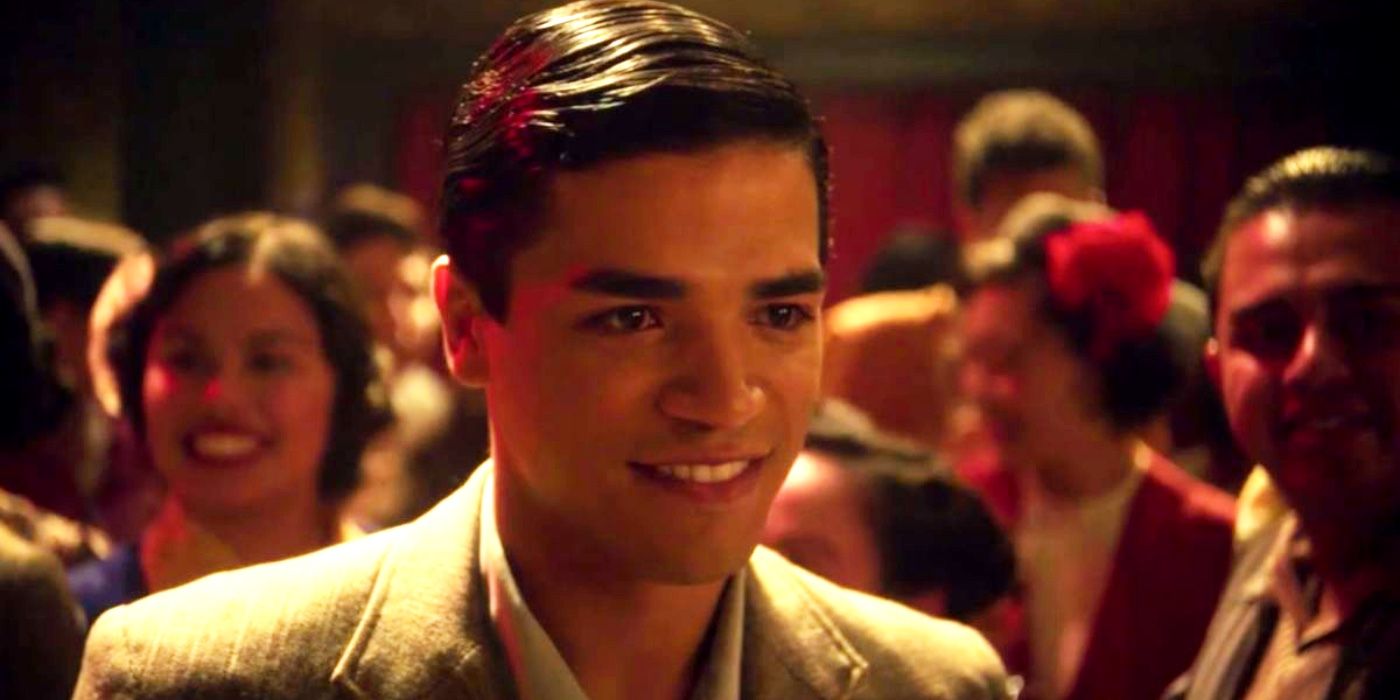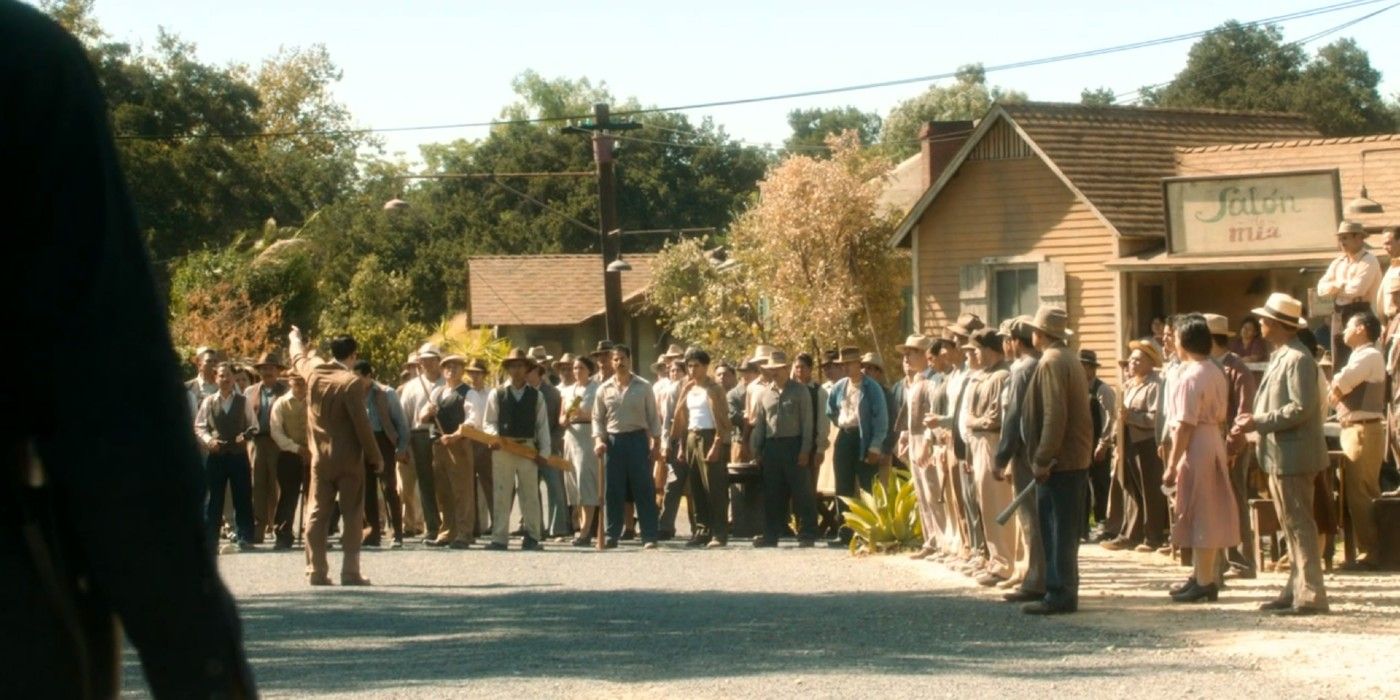John Logan's Penny Dreadful: City of Angels explores the social and racial tensions of 1938 Los Angeles, especially areas of Latino culture such as the origins and history of the pachucos.
Season 1, episode 3, "Wicked Old World" introduced a new location in the city of Los Angeles called The Crimson Cat as well as the shapeshifting demon, Magda's (Natalie Dormer), third pawn in the ongoing battle for the city's humanity. In the previous two episodes, the ongoing divide between white members of the Los Angeles Police Department and the Mexican-American community came to a head after a big riot that put the sole Latino member of the police department, Detective Tiago Vega (Daniel Zovatto) against his own family and people. While some of these tensions are orchestrated by Magda's influence, they are a hallmark of the times, a staple of the city's history and heritage. Likewise, City of Angels also shows the rise of the Nazi Party in pre-WWII America through several characters, including Dr. Craft (Rory Kinnear) and another of Magda's forms, Elsa.
Despite all the many different storylines, one of the biggest focuses in City of Angels is on Latino culture. This is played in part through Tiago's mother being a devotee of Santa Muerte (Lorenza Izzo), who is worshipped as a deity and also revealed to be Magda's sister. While Santa Muerte doesn't seem to possess the same level of interest in meddling directly with humankind, her sister has infiltrated many different aspects of the city, from the local government to the Nazis to the Latino community through a gang leader, Rio, who is a pachuco.
City of Angels: Pachuco History & Culture Explained
One of the most iconic aspects of a pachuco is the zoot suit, which was almost made illegal in Los Angeles due to its association with Hispanic gang members. The word pachuco has an unknown origin; some say it originated in El Paso, Texas, which was where the particular counter-culture movement began. There is also a town in Mexico called Pachuca, which could have been another source that created the term. It refers to a certain type of gang member; often, these individuals were connected through various street gangs and subscribed to alternative notions surrounding both relationships and gender, which went against the commonly accepted traditions of their white counterparts.
Because of this, pachucas (women who embraced the lifestyle) could be seen wearing a female-tailored version of the zoot suit, which was a stark difference from white families, where women did not wear pants, were meant to stay at home and tend to their families, particularly the children. Even though there were already growing issues between Latino communities and white communities, this choice to not only embrace the social norms, but directly defy them through clothing, dance, and other aspects of culture made the pachuco lifestyle even more of an 'other', thus creating a culture of fear around them and vilifying them. Because of this, pachucos were branded as "violent gangsters" and pachucas were deemed as unsavory and promiscuous, which led to them being treated poorly.
Another aspect of the pachuco culture and history was how they embraced their roots. In an era where being an immigrant meant assimilation, to some degree, the pachucos embraced their language, their music, dance, and were visible in their pride for their home country despite being immigrants and proud to be starting lives in America. As shown in Penny Dreadful: City of Angels, both sides of immigrants - Germans and Mexicans - are shown; the Germans try to blend in with society and deny their ways, while the Mexican immigrants still try to embrace their roots, despite being seen as outsiders and branded, often wrongfully, as criminals.


